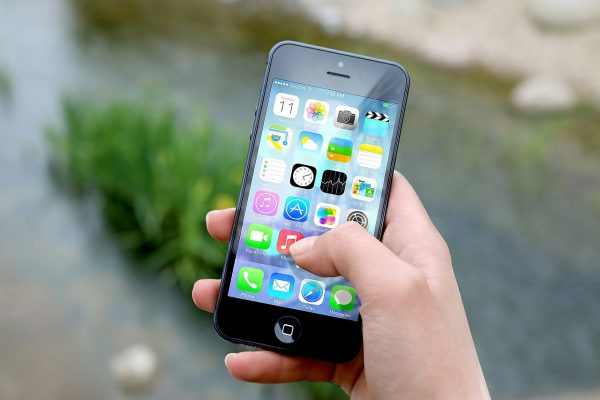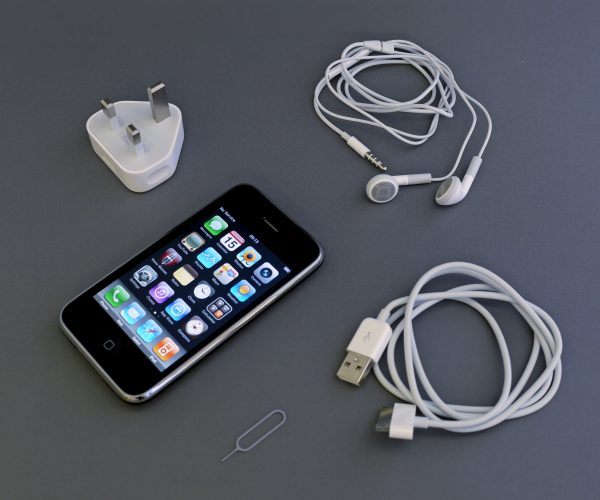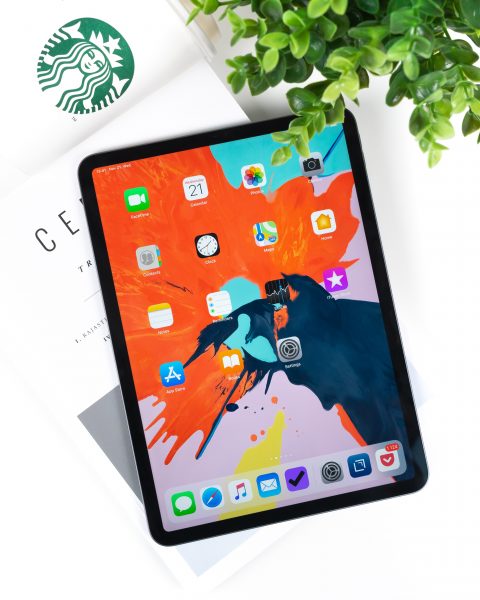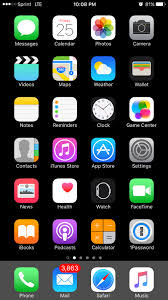Whether you’re an Apple user or not, I’m sure you’re curious as to what iOS stands for. What iOS does and how does it run your iPhone and iPad? You’ve come to the right place as we are going to discuss iOS and the evolution of Apple products from their desktops to laptops, tablets and mobile phones.
Before going over the details on what does iOS stand for, let’s discuss the rise of Apple products and why Apple created iOS.

Evolution Of Apple Products
The first Apple computer was launched in April 1976 by Steve Jobs and Steve Wozniak. Apple has been developing different devices since then, from computers to laptops, tablets and printers. In 1984, Macintosh was introduced in the market.
But not until 1998 when they first announced the iconic “i” branding with the iMac. According to Jobs, the meaning of the brand is “..comes from the marriage of the excitement of the internet, with the simplicity of Macintosh.
Apart from the reference to Internet and iMac’s focus on giving users a good online experience, Jobs explained that the “i” in the branding has so much more meaning to it. The iMac’s main focuses were the users and the market which supports the other themes of “i” which is individual, instruct, inform and inspire.
One year later, iBook was presented at Macworld as Apple’s consumer notebook or as an “iMac to go”. In a small event in 2001, Jobs unveiled the iPod. Because of the huge popularity of the iPod, the “i” branding has become a household name. And in 2007, iPhone was revealed to the public featuring it as a breakthrough cellular device.
The iPod touch was released after the iPhone, in the fall of 2007. Both of these devices were running on iPhone OS for 3 years until 2010, when iOS was introduced. Since then, Apple has been releasing updates for its mobile devices annually.

What Does iOS Stand For?
The term iOS (formerly known as iPhone OS) means iPhone Operating System. IOS is an operating system developed by Apple for the company’s mobile devices, including iPhone and iPod Touch and iPad also runs through iOS prior to the introduction of iPadOS this 2019. This is also the second most popular mobile OS after Android.
History Of iOS
Back in 2005, when Steve Jobs is cooking up his plans to create an iPhone, he had a choice to either enlarge the iPod or “shrink the Mac” which would need a great engineering. Although he favored the later approach, he opted for an internal contest between the Macintosh and iPod teams with the Macintosh team winning by creating the iPhone OS.
iOS was originally unveiled with the iPhone at the Macworld Conference & Expo on January 9, 2007 and was released in June the same year. At the time of the unveiling, Jobs called it as “iPhone runs OS X” and that it runs desktop application. But when the first iPhone was released, its operating system was renamed as “iPhone OS”.

About Apple’s User Interface
Its interface is based upon direct manipulation in which users can use multi touch gestures. The control elements of the interface consist of switches, sliders and buttons. Its interactions are swipe, tap, pinch and reverse pinch. All of which has specific outcomes on the system. Some of the applications respond to shaking the device or rotating the screen (either portrait or landscape).
During the first run of iPhones, third-party native apps were not supported. According to Steve Jobs, developers could build apps through the web Safari browser and that it would behave like native apps on the iPhone. It wasn’t until March 2008 that they announced that iPhone has Software Development Kit that developers can use.
In July 2008, the iOS App Store was opened with an initial 500 applications available. Since then, the number of applications available on the iOS App Store has been increasing and is projected to reach 5 million apps by 2020.
Apple has been calling their mobile system iPhone OS but not until June 2010 when Apple rebranded it to iOS. Even though the trademark iOS has been used by another company, Cisco, Apple was able to licensed the iOS trademark to avoid potential lawsuits.
IOS Software Updates
Since the creation of iOS in 2007, it has seen a lot of updates. Starting from iPhone OS 1 to its latest iOS 13, major updates have been made to accommodate the launch of iPhone, iTouch and iPad. Updates for iOS were first released through the iTunes software and since iOS 5, via over the air. These updates are provided annually to support the upcoming devices of Apple. Just recently, Apple has introduced a separate OS for its iPad, the iPadOS.
Features Of iOS
Home Screen

iOS’ home screen displays icons and a dock, which allow users to pin their most used apps at the bottom. Its home screen appears whenever the users unlocks the iPhone or whenever the “home” button was pressed.
Spotlight was introduced in iPhone OS 3 where users can search media, emails, contacts, messages, reminders, calendar events and similar content. In iOS 7, Spotlight can be accessed by pulling down anywhere on the home screen.
It wasn’t until iOS 4 when the home screen can be customized. Before this, the screen background could only be changed through jail breaking. Also at this same version, folders, which can be created by dragging an app on top of another and from then on, you can add more apps in the folder via the same procedure.
Before iOS 5, notifications were delivered through a modal window and users won’t be able to access it once dismissed. But in the iOS 5 update, Apple introduced Notification Center, where users can access their history and has the option to tap or clear it.
Accessibility
iOS has various access features to cater users with vision and hearing disabilities. Its feature, VoiceOver, gives users a reading of what’s on their screen and navigate the device through gestures.
When iOS 7 was released, Apple developed a technology to incorporate Bluetooth in the system. This allowed users to connect third-party equipment on iPhone and iPad for streaming audio directly to their ears.
Multi Tasking
Apple first released multi tasking for iOS in June 2010. During this time, multi tasking is supported through seven background APIs which include background audio, push notification, voice over IP, local notifications, task completion, background location, and fast app switching. In the iOS 5 update, three new background APIs were introduced; Newsstand, external accessory and Bluetooth accessory.
In the later iOS versions, users can switch apps by double clicking the home button. You can also end tasks by briefly holding the icon and tapping the red minus circle but later switched to simply swiping them upwards off the screen.
Siri
One of the most popular features of iOS is its virtual assistant, Siri. It was first seen on iPhone 4S, where Siri uses voice queries to answer questions. Siri can perform wide range of commands including phone actions, searching the net, GPS and a lot more.
Game Center
It also features a game center where users can invite friends to play a game, start an online game through matchmaking, track game achievements, and compare high scores through a leader board. It is an online “social gaming network” released by Apple.
Bonus: Jailbreaking
Jailbreaking’s first use was to bypass Apple’s payment system for the App Store. But when iOS App Store was introduced, the use for jailbreaking was changed. Users jailbreak their Apple device to install custom themes, modify their home screens and gain file system access.
On some Apple devices, jailbreaking also made it possible for users to install other operating systems. These include Linux, Kernel and Android. Users use it due to limitations by iOS. But since on the later updates, users aren’t that keen to jailbreak their phones anymore.
For everything you need to know about the latest iOS 13, click here.
